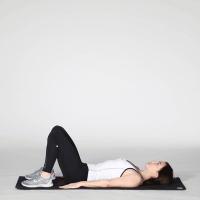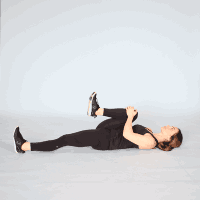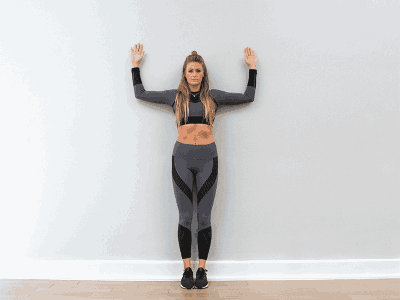Imagine a life without the freedom to move, bend, or stretch without wincing in pain. For millions around the world, this isn’t an imagination but a daily reality due to spine pain. In this comprehensive guide, we embark on a journey to understand the intricacies of spine pain – its causes, symptoms, and the wide array of treatment options available. By the end, you’ll be equipped with the knowledge to demystify this discomfort and regain control of your life. So, let’s begin the exploration of spine pain, unlocking the secrets to a pain-free existence.
Contents
Common Causes Of Spine Pain
Spine pain, a widespread issue affecting people of all ages, can be attributed to various causes. Understanding these underlying factors is essential for effectively addressing and managing spine pain. Here, we explore some of the most common causes:
- Muscle Strains and Sprains: Overexertion, lifting heavy objects incorrectly, or sudden movements can strain the muscles and ligaments supporting the spine, leading to pain and discomfort.
- Herniated Discs: When the soft interior of a spinal disc protrudes through the tough exterior, it can compress nearby nerves, resulting in pain, tingling, or numbness.
- Spinal Stenosis: This condition involves the narrowing of the spinal canal, which can exert pressure on the spinal cord and nerves, causing pain and weakness.
- Arthritis: Osteoarthritis, rheumatoid arthritis, and other forms of arthritis can affect the spine, leading to pain, stiffness, and reduced mobility.
- Sciatica: Sciatica is characterized by pain that radiates along the sciatic nerve, typically caused by compression or irritation of the nerve roots in the lower spine.
- Scoliosis: Abnormal curvature of the spine, known as scoliosis, can result in chronic back pain, especially in more severe cases.
- Degenerative Disc Disease: Over time, the discs that cushion the vertebrae can degenerate, leading to pain and reduced spinal flexibility.
- Poor Posture: Maintaining improper posture while sitting, standing, or lifting objects can strain the spine and contribute to chronic pain.
- Injuries: Traumatic events like car accidents, falls, or sports-related injuries can damage the spine’s structures and lead to persistent pain.
- Medical Conditions: Underlying medical conditions such as kidney stones or endometriosis can sometimes manifest as pain in the back or spine.
- Age-Related Changes: As we age, the spine naturally undergoes wear and tear, resulting in pain and reduced mobility.
- Lifestyle Factors: Sedentary lifestyles, obesity, and smoking can contribute to spine pain by weakening the supporting structures or promoting inflammation.
Exercises To Relieve Spine Pain
Here are some exercises that can help you relieve spine pain:
Pelvic Tilts
- Lie on your back with your knees bent and feet flat.
- Tighten your abdominal muscles and push your lower back into the floor.
- Hold for a few seconds, then release.
Cat-Cow Stretch
- Begin on hands and knees in a tabletop position.
- Inhale as you arch your back (Cow Pose), lifting your head and tailbone.
- Exhale as you round your spine (Cat Pose), tucking your chin and tailbone.
- Repeat this flow several times.
Child’s Pose
- Kneel on the floor with toes together and knees apart.
- Sit back on your heels and stretch your arms forward on the floor.
- Hold and breathe deeply.
Bridge Exercise
- Lie on your back with your knees bent and feet flat on the floor.
- Lift your hips off the ground, creating a straight line from shoulders to knees.
- Hold for a few seconds, then lower.
Knee-to-Chest Stretch
- Lie on your back with your legs extended.
- Bring one knee up toward your chest and hold it with your hands.
- Hold for 20-30 seconds, then switch legs.
Cat-Camel Stretch
- Kneel on the floor with hands under your shoulders and knees under your hips.
- Arch your back upward, then arch it downward, alternating between the two positions.
Wall Angels
- Stand with your back against a wall and feet a few inches away.
- Bend your elbows to 90 degrees, with your arms against the wall.
- Slowly slide your arms up and down the wall, maintaining contact with the wall.
Incorporate these exercises into your daily routine with guidance from a healthcare provider or physical therapist. Regular practice can help alleviate spine pain, improve flexibility, and strengthen the muscles supporting your spine.
Conservative Treatments For Spine Pain
Spine pain can be a persistent and debilitating issue, impacting every aspect of daily life. Fortunately, there is a wide range of treatments available to address spine pain, tailored to the severity of the condition and the individual’s specific needs. Some common non-surgical spine pain treatment options include:
- Physical Therapy: It is a cornerstone of conservative spine pain treatment. It focuses on strengthening the muscles supporting the spine, improving flexibility, and enhancing posture. Physical therapy can reduce pain, increase mobility, and prevent further issues by addressing the root causes of spine pain.
- Medications: Over-the-counter pain relievers, muscle relaxants, and prescription medications can provide relief from spine pain and inflammation. Medications can help manage symptoms and improve daily functioning, making it easier to engage in rehabilitation and other therapies.
- Epidural Steroid Injections: These injections deliver corticosteroids directly to the affected area around the spinal cord, reducing inflammation and alleviating pain related to nerve compression. They provide temporary relief and facilitate participation in rehabilitation.
- Assistive Devices: Canes, walkers, or braces can offer support and stability, reducing pressure on the spine during weight-bearing activities. These devices enhance mobility and independence while managing spine pain.
- Lifestyle Modifications: Maintaining a healthy weight, staying physically active, and avoiding activities that exacerbate symptoms are essential components of lifestyle modifications. These changes contribute to improved overall health and well-being, reducing the impact of spine pain on daily life.
Surgical Treatments For Spine Pain
Some of the most effective spine pain surgical treatment include:
- Discectomy: In this procedure, a surgeon removes all or part of a herniated disc that is pressing on nerves in the spine. Discectomy helps relieve nerve compression and associated pain.
- Laminectomy: It involves removing a portion of the vertebral bone (lamina) to create more space within the spinal canal, alleviating pressure on the spinal cord or nerves. It can be effective for conditions like spinal stenosis.
- Spinal Fusion: This joins two or more vertebrae together, reducing movement and stabilizing the spine. Spinal fusion can address issues like spinal instability or severe degenerative disc disease.
- Artificial Disc Replacement: This procedure involves removing a damaged disc and replacing it with an artificial one to maintain spine mobility. Artificial disc replacement can preserve spine function and reduce discomfort.
- Minimally Invasive Surgery: Minimally invasive techniques use smaller incisions, reducing tissue damage and recovery time for procedures like discectomy or spinal fusion. This surgery can provide effective results with shorter hospital stays and less postoperative pain.
Tips To Deal With Spine Pain At Home
Dealing with spine pain at home can be challenging, but there are several practical tips you can follow to alleviate discomfort and improve your quality of life while at home. Here are some general tips for dealing with spine pain at home:
- Maintain Good Posture: Be conscious of your posture when sitting, standing, or walking. Use supportive chairs and cushions to help maintain proper alignment.
- Stay Active with Gentle Exercises: Engage in low-impact exercises such as walking, swimming, or tai chi to keep your spine mobile. Perform specific spine-strengthening exercises recommended by a physical therapist.
- Apply Heat and Cold Therapy: Use heat packs or warm baths to relax tight muscles and increase blood flow to the affected area.
- Invest in Supportive Mattresses and Pillows: Choose a mattress and pillows that provide adequate spinal support and alignment. Ensure your sleeping position promotes spine health.
- Practice Stress Reduction Techniques: Stress can exacerbate spine pain. Explore relaxation methods such as deep breathing, meditation, or yoga.
- Lift and Move Safely: When lifting objects, use proper lifting techniques by bending at the knees and keeping your back straight. Avoid heavy lifting whenever possible.
- Use Assistive Devices: Consider assistive devices like canes or walkers if mobility is impaired. Ergonomic tools can reduce strain during daily tasks.
- Manage Weight: Maintain a healthy weight to reduce excess stress on your spine. Consult with a healthcare provider for weight management guidance.
- Avoid Prolonged Sitting or Standing: Take regular breaks to change your posture, especially if your job involves prolonged sitting or standing.
- Stay Consistent with Medications and Therapies: If prescribed medications or physical therapy, adhere to the recommended schedule. Communicate any changes or concerns with your healthcare provider.
- Engage in Low-Impact Activities: Consider gentle exercises like tai chi or Pilates to improve flexibility and reduce spinal discomfort.
Conclusion
In conclusion, spine pain can be a challenging and disruptive condition, affecting various parts of the spine and causing discomfort and limitations in daily life. However, there is hope and help available. Whether you’re dealing with lower back pain, upper spine pain, or general spine discomfort, understanding the causes, treatment options, and practical tips for managing it at home is crucial.
If you’re experiencing Back pain, physical therapy for back pain at PhysioMantra can help: Book an online physical therapy session.






